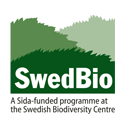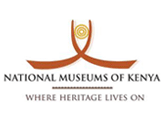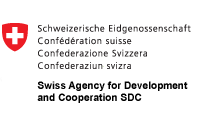Scientific Classification
Species in the Genus
Species in Kenya, Tanzania & Uganda
Description
Possible Causes of Confusion
Distribution in Kenya, Tanzania & Uganda
Habitats
Nesting
Crops Visited
Other Plants Visited
Economic / Ecological Importance
Threats
Conservation and Management Practices
Legislation (National and International)
References
Editors
Acknowledgements
Contact
Click on images to enlarge
/thumbs/16Apis01_sml.jpg)
Apis mellifera. Photo by Christophe Quintin (CC BY-NC)
/thumbs/17Apis02_sml.jpg)
Apis mellifera. Photo by M.V. Kitahara (CC BY-NC-SA)
/thumbs/18Apis03_sml.jpg)
Apis mellifera. Photo by Gustavo Fotoopa (CC BY-NC-ND)
/thumbs/Apis_mellifera_FHx0.8__sml.jpg)
Apis mellifera (female) - pinned specimen. Photo: Connal Eardley
/thumbs/Apis_mellifera_MH_0.5x0.8__sml.jpg)
Apis mellifera (male) - pinned specimen. Photo: Connal Eardley
Summary
Wherever bees are spoken of in
From a conservation and agricultural standpoint it is not necessary to recognise all the different bee genera. However, it is important to know that there is a large bee biodiversity. Different bee genera pollinate different plant species, although there is some overlap that acts as a buffer as bee populations wax and wane. For healthy ecosystems, including agro-ecosystems both diversity and abundance in the bee fauna is important.
Common Name (Language)
African honey bee, honey bee, bees (English), nyuki (Kiswahili), abeilles (French).
Scientific Classification
Kingdom: Animalia
Phylum: Arthropoda
Class: Insecta
Order: Hymenoptera
Family: Apidae
Subfamily: Apinae
Tribe: Apini
Species in the Genus
Worldwide, three subgenera have been recorded. These include: Subgenus Micrapis: Apis andreniformis, Apis florea, Subgenus Megapis: Apis breviligula, Apis dorsata, Subgenus Apis: Apis cerana, Apis indica, Apis koschevnikovi, Apis mellifera, Apis nigrocincta.
Species in Kenya, Tanzania & Uganda
The species Apis mellifera is the only representative of Apis in East Africa though several sub-species occur (Raina & Kimbu 2005, Anon 1984; Meixner et al. 1989), including Apis mellifera scutellata (Kenya, Tanzania, Uganda), Apis mellifera nubica (Kenya), Apis mellifera litorea (Kenya), Apis mellifera monticola (Kenya, Tanzania) and Apis mellifera adansonii (Uganda, Tanzania).
Description
The honey bee varies in colour depending on sub-species but they are generally amber to brown with alternating black stripes on the abdomen . Some sub-species are mostly black. They have short hairs and are generally gentle unless the hive is threatened. They are about 1.3 cm long. The honey bee is described by local people according to the subspecies characteristics, mainly using the colour (amber, brown or black), the size (e.g. small, big) and nesting sites used (e.g. nesting in the ground, in tree holes, hives, etc.).
Possible Causes of Confusion
Some insect species look like the honey bee. These include the bee genera Amegilla (banded bees), Anthophora, Tetralonia, and Tetraloniella (long horned bees). These other bees do not have colonies like the honey bee. While visiting crops, honey bees are known to mostly visit multiple flowers of the same plant species before going back to the nest. These other bees may not have this kind of behaviour. However, this needs to be confirmed scientifically. Some hoverflies (Syrphys species) also look like honey bees. Hoverflies can be distinguished from honey bees as they have only two wings while bees have four. In addition, hoverfly eyes are larger than those of the honey bee and its body shape tapers towards the end of abdomen .
Distribution in Kenya, Tanzania & Uganda
The honey bee is found in most districts/regions of
Habitats
The honey bee can be found in various habitats in
Nesting
The honey bee is commonly found in traditional and modern hives, but can also be found in wild colonies in cavities of stumps, dead wood, living trees and underground. These different nesting sites can be found in any of the aforementioned habitats.
Crops Visited
The honey bee is known to collect nectar and pollen from most flowering crop species belonging to many different plant families which are all grown in
Other Plants Visited
In the wild the honey bee visits a large variety of plant species (trees, shrubs, herbs, weeds, lianas) found in different habitats (Eardley et al. 2009).
Economic / Ecological Importance
The honey bee is currently the most prized pollinator of high value crops worldwide, particularly among the managed pollinators. A recent study estimated that honey bees annually pollinate more than KES 1 trillion worth of seeds and crops in the
Threats
In
Conservation and Management Practices
There are now concerted research efforts in the region to develop best practices for conservation and management of bees that are compatible with other good farm practices, to enhance crop production. Theoretically, bee conservation and management is inexpensive and adopted activities can also improve the aesthetic value of the landscape.
During flowering, farmers should manage pesticide usage carefully to avoid poisoning flower-visiting bees. Farmers should also minimise pesticide drift from the field to adjacent areas. Honey bee colonies can be removed from an area before applying pesticides.
Forage management can help to ensure the bees have nectar and pollen all year round. This includes sustaining the diversity of different plants to ensure the presence of flowers all year round, particularly when crops are not flowering. Areas with such plants could provide sites for resting and nesting of these bees. Practices such as setting land aside (e.g. a 1-metre strip) in the farmland to host all year round food resources for the bees are likely to be beneficial. Additional measures to enhance honey bee numbers include the provision of water, the provision of sugar water during times when there is insufficient nectar (but this must be done according to specific guidelines otherwise it will cause the death of the bees), the provision of good nesting sites and the management of bee pests and diseases.
Awareness-raising among local people to increase their understanding of the value of conserving the honey bee is a crucial component of conservation. This will include understanding which crops they pollinate and ensuring these crops are well pollinated by the honey bee. In addition it is important to increase awareness of the value of honey bees as a source of hive products.
Note that these management options are also likely to favour the conservation of other kinds of bees that are pollinating crop flowers.
Legislation (National and International)
Laws governing registration and use of plant protection products also indirectly play a major role in the protection of pollinators Such legislation, together with market-based mechanisms such as the Good Agricultural Practices (GAPs) codes and practices may help to protect bees albeit incidentally. At the international level, the Conservation on Biological Diversity (CBD) is spearheading strategies to enforce bee management for pollination purposes within the member countries, which include
References
1. Eardley CD, Gikungu M and Schwarz MP (2009) Bee conservation in Sub-Saharan Africa and
2. Morse RA and Calderone NW (2000) The Value of Honey Bees as Pollinators of U.S. Crops in 2000.
3. Meixner M, Ruttner F and Koeniger G (1989) The Mountain Bees o the Kilimanjaro region and their relation to neighbouring bee population. Apidologie, 201:165-174.
4. Kajobe R, Marris G, Budge G, Laurenson L, Cordoni G, Jones , Wilkins S, Cuthbertson AGS and Brown AM (2010) First molecular detection of a viral pathogen in Ugandan honeybees. Journal of Invertebrate Pathology 104: 153–156.
5. Michener CD (2007) The Bees of the world, the John Hopkins University Press,
6. Raina SK, Kimbu DM (2005) Variations in races of the honeybee Apis mellifera (Hymenoptera: Apidae) in
Editors
Théodore Munyuli, Busitema University - Uganda; Muo Kasina, Kenya Agricultural Research Institute (KARI) - Kenya; Juma Lossini, Tropical Pesticides Research Institute (TPRI) – Tanzania; John Mauremootoo, BioNET-INTERNATIONAL Secretariat – UK; Connal Eardley, Plant Protection Research Institute (PPRI) – South Africa.
Acknowledgements
We recognise the support from the Kenya Agricultural Research Institute (KARI), Tropical Pesticide Research Institute (TPRI) –
Contact
BioNET-EAFRINET regional coordinator: [email protected]












